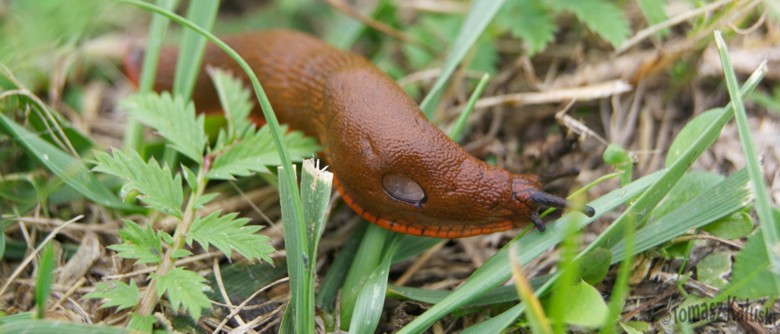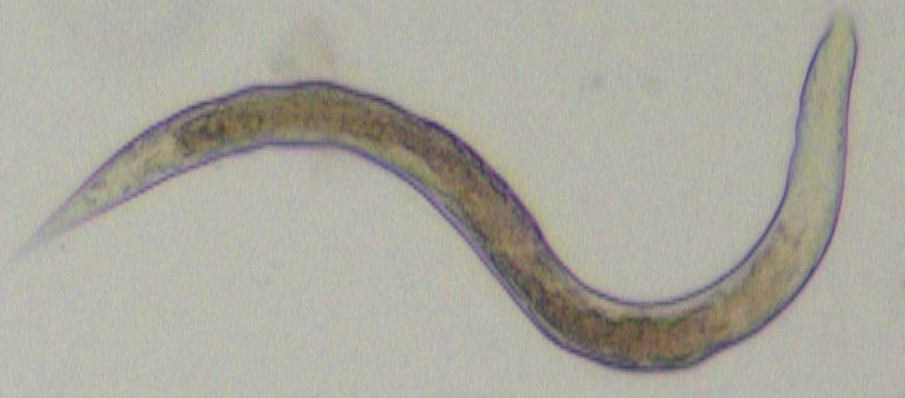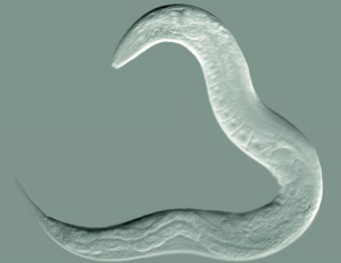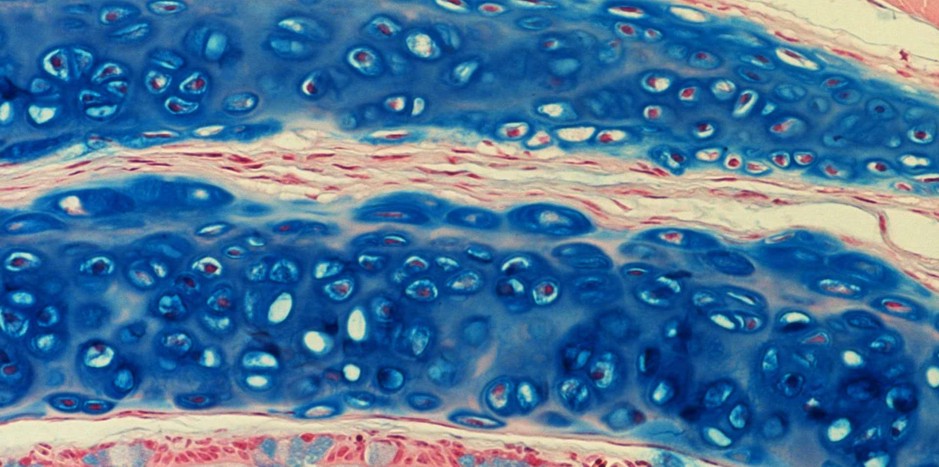TeamPhysiological and Evolutionary Ecology of Invertebrates
Our Team is the youngest in the Institute and was establish in December 2013. Soon I will provide link to our team web page.
Current project,coordinatorImpact of climate change on biodiversity and spread of invasive species - A study on Arion slugs

Funded by Norway Grants, EEA, in cooperation with Institute of Plant Protection - National Research Institute, Poznań, Poland and Bioforsk, Plantehelse, As,Norway
It is well recognized that climate change will affect impact and range of biological invasions, one of the major drivers of biodiversity changes. The ecological and economic consequences of interaction of both phenomena are still only partly understood and difficult to predict. Thus, enhanced research on biological invasions in the face of climate change is urgently needed. The infamous ‘Iberian slug’, Arion vulgaris (also known as A. lusitanicus), is a well-known example of a devastating invasive species that has gradually spread from Southern Europe to Central and Northern Europe in the last 4-5 decades, confirming the reported rise in average temperature. We propose to study climate change as a major factor contributing to further expansion of A. vulgaris as a model to predict further spread of other invasive species with increase of environmental temperature. At the same time, by studying the slug’s parasites we will discover the most common parasites of Arion and will explore mode of parasites’ spread along with invasive species. We will also aim to find novel biological control agents of A. vulgaris possible to apply in future and thus contributing to non-toxic environmentally friendly alternatives for pest management.
Current project, principal investigatorThermal fluctuation and geographic variability of parasite (entomopathogenic nematode, Steinernema feltiae) as factors influencing its infectivity to host (red flour beetle, Tribolium castaneum)

Funded by National Science Centre, programme: Opus
Sensitivity of ectotherms to temperature may be described by two opposite strategies with the whole continuum between them: organisms most sensitive to temperature changes (stenotherms) and organisms which are relatively insensitive to thermal fluctuations (eurytherms).Mathematically the response of ectotherms to temperature can be described by an asymmetric function, the so-called performance curve. The parameters of performance curves allow to compare the shape of performance curves between organisms/species. It is still unclear to what extent the shape of performance curves corresponds to the life history strategies employed by organisms of different thermal conditions. Typically, ectotherms grow slower in cold, mature later and finally attain larger body size than their counterparts from warm (temperatures-size rule, TSR). In some species, the temperature-driven increase in body size can be generated by the enlargement of cell sizes, but the role of cell size versus cell number in this phenomenon is not well understood. Effects of temperature are not only visible at the organismal level, but also of the level of multi-trophic interactions including the relationship between hosts and their parasites. This important scientific issue, however, is still very poorly studied. Giving the scientific and practical importance of the effects of thermal conditions on organisms and their interactions we propose a project on two ectotherms: the flour beetle (Tribolium castaneum) and the insect-killing nematode (Steinernema feltiae).
Current project, investigatorEvolution in a novel environment - repeatability of adaptation and the role of mating system
A bulk of our current knowledge on the evolutionary processes came from studying the outcomes of past evolution, e.g. patterns of divergence between species and populations at the level of phenotypes, genes or genomes. Experimental evolution is a powerful alternative research framework which offers the opportunity to study evolutionary processes in real time. The great strength of this approach lies in using replicated and controlled experiments to directly track, in real time, the changes in fitness (or any other trait of interest), occurring in response to a specified change in the environment. In the 19 years, since the seminal paper by Lenski & Travisano (1994) was published, experimental evolution studies have contributed hugely to our understanding of the issues outlined in the above quote. Research on microbial organisms, such as viruses and bacteria, has been particularly fruitful because biological properties of microbes enable large experimental populations in many replicates, thousands of generations spanned in a relatively short time, and fitness assays in which derived lineages can be directly competed against their ancestor. However, multicellular organisms differ profoundly from microbes by greater complexity (both phenotypic and genomic) and by typically exhibiting (some form of) sexual mode of reproduction. Not only both these features – complexity and sexual reproduction – belong to long-standing puzzles of evolutionary biology; they are also expected to have considerable impact on evolutionary processes themselves. Consequently, conclusions on the dynamics of adaptive evolution, derived from microbial studies, cannot be easily extrapolated on multicellular organisms. Meanwhile, most experimental evolution studies on multicellular organisms span low number of generations and feature low numbers of replicate populations of small sizes. Also, in most multicellular organisms, fitness is extremely difficult (or even logistically impossible) to measure, and competing derived lineages against their common ancestor is impossible. Here, we propose a long-term, highly replicated experimental evolution project on relatively large populations of the nematode Caenorhabditis elegans. We will study •the relative roles of chance and adaptation on the evolution of initially identical replicate populations under novel environmental conditions (measured by the extent of repeatability of evolution) •the influence of reproductive system on the rate and repeatability of adaptation to novel environmental conditions
Current project, investigatorThe role of cell size in the origin of mass-scaling of metabolism and temperature-dependence of body size - empirical testing of hypotheses and building up a theory of life history evolution integrated with physiology and cell biology
Theoretical background: Metabolic scaling theory of West et al. (1997), the pillar of Metabolic Theory of Ecology, has been falsified and current attempts to explain metabolic scaling are oriented on within-cell processes (Agutter and Tuszynski 2011). Although the scaling model of Kozłowski et al. (2003a) is rooted in cell biology, it must be modified to account for the latest discoveries in the field. Given that larger cells have lower surface-to-volume ratio, they should be relatively cheaper in maintenance, because fewer ATPs are required for maintaining ion gradients on cell membranes. The original cellular model predicted that this mechanism entirely shaped mass-scaling of metabolism. In accord, evidence shows a negative relationship between cell sizes and metabolism in various animal groups, but this relationship appears too flat to fully explain values of metabolic scaling exponents. It is not surprising: only a part of cell maintenance costs, in the range of 20%, is spent on maintaining membrane gradients. Our current and not published hypothesis is as follows. Mass-specific metabolic rate must decrease across a wide range of body masses because of design constraints. In vertebrates, with oxygen distributed through circulatory system, keeping the same mass-specific metabolism would require an isometric increase of capillary blood amount, with a disproportional increase of the fraction of blood in higher-order vessels, directly not participating in gas exchange. Evolution of such organisms across a broad mass range would be mechanically impossible, because large animals would become almost entirely filled with circulatory system. To keep total blood fraction of organisms roughly mass invariant, capillary system must decrease in density (less capillary blood), which reduces oxygen delivery to tissues and thus metabolism. Tissue with lowered per-volume metabolism require less substrates and oxygen, which should elicit reductions in mitochondria density and/or their activity modulated by membrane composition. If simultaneously cell size increases, lower fraction of oxygen and resources will be spent on cell maintenance and higher on effective work. High demands for oxygen or low oxygen pressures favor small cells because their membranes constitute a denser pathway network for oxygen transport. Similar reasoning is valid for animals other than vertebrates, with different systems of global oxygen distribution, e.g., tracheal system in insects. Summarizing, an increase of cell sizes with body mass is not solely responsible for a negative allometry of metabolic rate. The causal relationship is as follows: low metabolism – larger cells possible – even lower metabolism. This causal system depends on constrains in long distance oxygen transport. In ectotherms, optimal cell size should depend on temperature. Higher temperatures increase oxygen demands and generate hypoxia, favoring smaller and expensive cells that facilitate oxygen transport. Lower temperatures limit metabolic demands by constraining the rate of biochemical processes, which makes large and cheap in maintenance cells optimal. This theory may explain why some ectotherms develop smaller cells if reared in warm or under lower oxygen availability, and why there exist geographic clines in cell size across latitudes. This theory will be also used to assess the role of cell size in the origin of life history responses of ectotherms to temperature (low temperatures often retard ectotherms’ growth but generate larger adult sizes, the so-called temperature-size-rule, TSR).
Selected publications
Kramarz P.E., de Vaufleurey A., Zygmunt P.M.S., Verdun C. 2007. Increased response to cadmium and Bt maize toxicity in the snail Helix aspersa infected by the nematode Phasmarhabditis hermaphrodita. Environmental Toxicology and Chemistry 26:73-79
PDF
Kramarz P.E., De Vaufleury A., Carey M. 2007. Studying the effect of exposure of the snail Helix aspersa to the purified Bt toxin, Cry1Ab. Applied Soil Ecology 37:169-172
PDF
Kramarz P., de Vaufleury A., Gimbert F., Cortet J. 2009. Effects of Bt-maize material on the life cycle of the land snail Cantareus aspersus. Applied Soil Ecology 42: 236-242
PDF
Laskowski R. , Bednarska A.J., S Kramarz P.E., Loureiro S., Scheil V., Kudłek J., Holmstrup M. 2010 Interactions between toxic chemicals and natural environmental factors - A meta-analysis and case studies. Science of the Total Environment 408: 3763-3774
PDF
Holmstrup M., Bindesbol A.-M., Oostingh G.J., Duschl A., Scheil V., Köhler H.-R., Loureiro S., Soares A.M.V.M., Ferreira A.L.G, Kienle C., Gerhardt A., Laskowski R., Kramarz P.E., Bayley M., Svendsen C., Spurgeon D.J. 2010 Interactions between effects of environmental chemicals and natural stressors: A review. Science of the Total Environment 408: 3746-3762
PDF
Plesnar-Bielak A., Jawor A., Kramarz P.E. 2013. Complex response in size-related traits of bulb mites (Rhizoglyphus robini) under elevated thermal conditions - an experimental evolution approach. Journal of Experimental Biology 210: 4542-4548
Kramarz P.E., Mordarska A., Mroczka M. 2014 Response of Tribolium castaneum to elevated copper concentrations is influenced by history of metal exposure, sex-specific defences, and infection by the parasite Steinernema feltiae. Ecotoxicology DOI 10.1007/s10646-014-1212-z
Host-parasite interaction – ecology and application in biological control
Ecology of different parasites including pathogens (viruses, bacteria), parasitoids (Diptera) of invertebrate animals Lectures: Essential interaction between animals with special consideration of continuum symbiosis-pathogenity; Host resistance vs. parasite infectivity; Influence of environment on host-parasite interactions; Importance of host-parasite interaction in evolution; Species applied as biological control agents.
Ecophysiology of Insects
Lectures: Nutritional physiology and ecology; Metabolism and gas exchange, mechanism of locomotion depending on the environment; Adaptation do thermal conditions, water availability, environment salinity; Connection between life history traits and environmental conditions; Biotic interactions.






